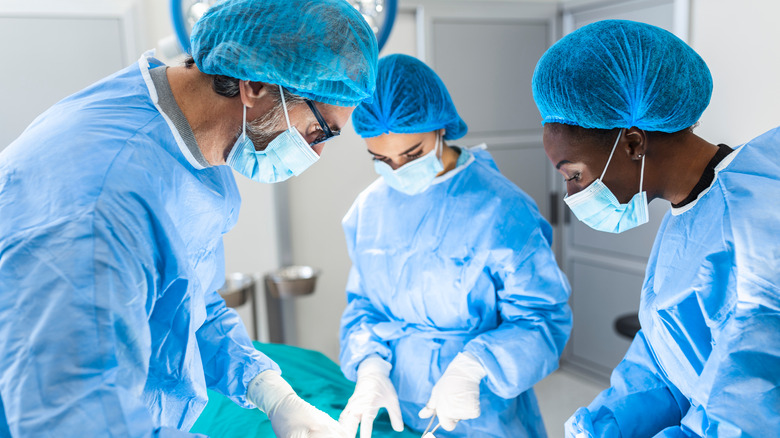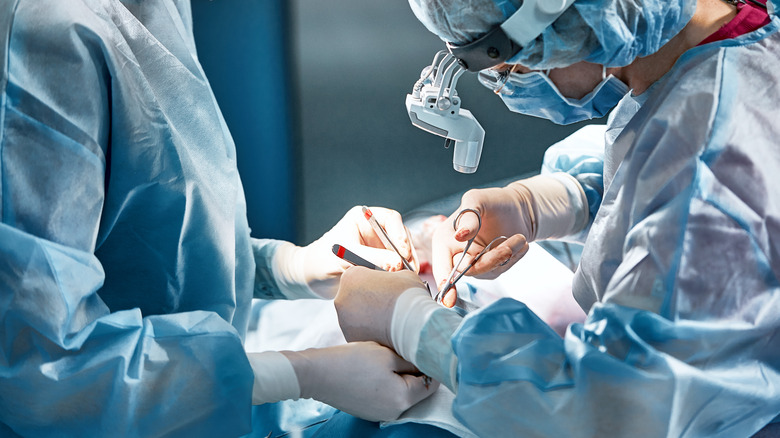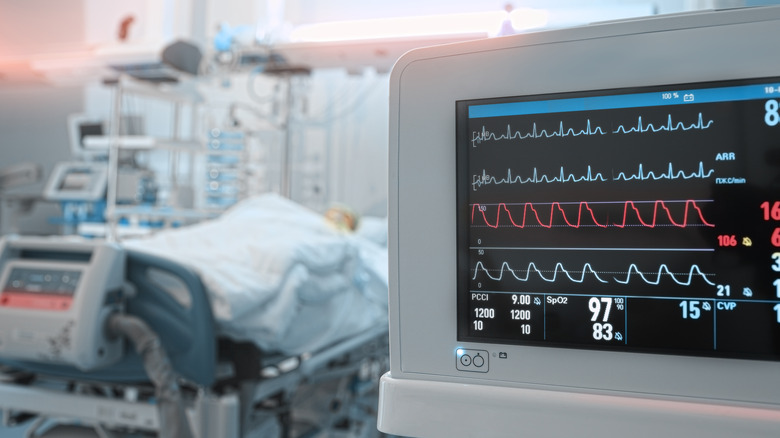The Tragic Story Of The First Human Heart Transplant
A crucial part of medicine today, the heart transplant procedure has only been around since the late 1960s. The reason heart transplants are a viable treatment option is all thanks to Dr. Christiaan Barnard, the pioneer in medicine responsible for the first and second human heart transplants. It is because of his research and expertise that the modern heart transplant procedure is one of many organ transplants possible for those who need them.
The time leading up to and the time after the first human heart transplant involved a lot of trial and error in both animal and human patients. Medical and veterinary researchers across the globe have all contributed pieces of information that aided Dr. Barnard in his success. It is also thanks to the first donor, Denise Darvall, and first patient, Louis Washkansky, that the first human heart transplant was able to be performed in the first place (via History.com).
Heart transplants had been performed in animals
Before the famous first human heart transplant had been performed, American surgeon Norman Shumway had achieved the first successful heart transplant in a dog in 1958 (via History.com). This was an impressive feat, although by far one of the less bizarre experiments ever performed on an animal. In 1965, researchers managed to discover a new technique and anti-rejection drugs that lowered transplant rejection rates and achieved a survival of 250 days of a dog after transplant (via the National Library of Medicine).
Many more dog heart transplants were performed in the years leading up to the first human heart transplant. This research would become a vital reference for Dr. Christiaan Barnard before and during the surgery. In fact, the technique that Dr. Barnard employed for his heart transplant surgeries was very similar to that of the first successful dog heart transplant (via History.com).
The first human heart transplant patient was a grocer
The first human heart transplant patient was 53-year-old Louis Washkansky, a South African grocer. He was dying of chronic heart disease and desperately needed a new heart. He received his new heart from 25-year-old Denise Darvall, who had been fatally wounded in a car accident. The surgery was performed by Dr. Christiaan Barnard on December 3rd, 1967 at Groote Schuur Hospital in Cape Town, South Africa (via History.com).
The enormity of the situation was felt in the room when the diseased heart was removed from Washkansky's chest. An empty pericardial cavity, seen for the first time by Dr. Barnard and those attending, would soon be filled with a new, functioning heart (via the National Library of Medicine). A similar feeling filled the room during the first successful heart transplant in the United States, led by Norman Shumway and Edward Stinson (via Stanford Medicine). As Stinson put it, "we both stood there and stared into this huge, empty cavity for a good half a minute, it was a magical moment."
Anti-rejection drugs made his immune system too weak
Anti-rejection drugs are designed to suppress the immune system to keep it from rejecting a newly transplanted organ (via Cleveland Clinic). Louis Washkansky was given anti-rejection drugs after his heart transplant, but was left susceptible to sickness as a result. While his recovery seemed to be going well for the first two weeks, his condition began to deteriorate suddenly and he developed radiographic infiltrates in the lungs (via the National Library of Medicine).
The medical team was unsure if Washkansky's deterioration was due to his body rejecting the new heart or caused by infection. They decided to up the dosage of the anti-rejection drugs to attempt to keep his body from rejecting the new heart (via the National Library of Medicine). Unfortunately, Washkansky's body was not rejecting the heart, so the anti-rejection drugs just continued to weaken his immune system. He died of pneumonia 18 days after the transplant (via History.com).
He died of illness, but the new heart remained strong
While Louis Washkansky died just 18 days after his successful transplant, the death itself was not caused by his body rejecting the heart. In fact, his new heart remained functioning without issue until his death, according to his autopsy (via History.com). Autopsies are not performed for every death, but are vital in situations like Washkansky's death, where knowing the cause of death is crucial.
Dr. Barnard knew how vital heart transplants were if patient survival outlook improved. He immediately began work on the second successful human heart transplant on January 2nd, 1968, just one month after performing the first. His patient, 59-year-old dental surgeon Philip Blaiberg, lived for 19 months after the transplant. Blaiberg became the first heart transplant patient to leave the hospital, returning to a relatively normal life. It was the success of this second heart transplant that lead to heart transplants becoming a viable treatment option (via the National Library of Medicine).
Improved anti-rejection drugs led to more viable transplant
In the 1970s, better anti-rejection drugs were created, increasing the survivability of heart transplants. Dr. Christiaan Barnard would go on to perform many more heart transplant surgeries in his career, and became a household name in the 1970s for his historic first human heart transplant. Many of Dr. Barnard's patients were able to live up to five years with their new hearts (via History.com)
Today, heart transplants are routinely performed on patients who need them whenever a new heart becomes available from a donor. In fact, having a heart transplant surgery isn't even one of the most dangerous surgeries you can have. Survivability rates for heart transplants have improved, with 85-90% of patients living at least one year (via UpToDate). Out of those who survive the first year after transplant, at least half live another 13.5 years (via Mayo Clinic). It is because of the work of Dr. Barnard that more than 2,000 people undergo heart transplants in the United States alone every year (via John Hopkins Medicine).





